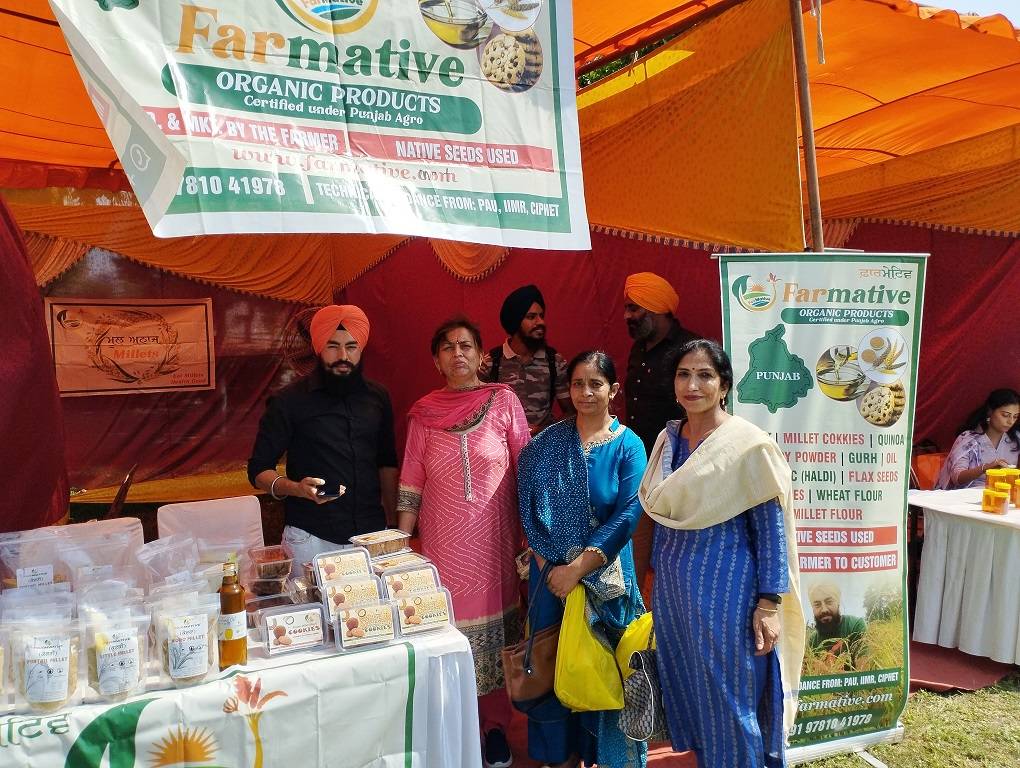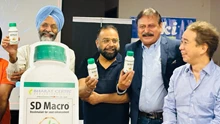
Monocropping culture is an agricultural practice of growing a single crop or plant variety in a farming system at a time. In Punjab, monocropping is extremely popular and is responsible for wreaking havoc on the fertility of the soil and reducing the water table because of the indiscriminate use of chemical fertilizers and pesticides to increase yield.
Wheat and paddy constitute more than 80% of the crops grown. Growing the same crop, such as wheat and paddy, every year increases the crop’s vulnerability to pest infestations and diseases. And unlike pulses and legumes, neither wheat nor paddy, make the soil absorb nitrogen or any other important mineral.
To counter the monocropping culture that is prevalent in Punjab many young farmers are returning to millet. Millets have always been a traditional and sustainable crop in the region of Punjab. The reference to this crop can be found in archaeological evidence of the Indus civilization also. The crop was never a dominant crop but was always used in combination with other crops, thus creating a sustainable cropping pattern that was able to withstand rainfall variability.
Millets were popular even in the 1970s. The six types of millets that are the most popular are- Kodra, Swank, Kangni, Kutki, Ragi, Bajra, and Jowar. These millets were part of the everyday meal and were grown regularly depending on the suitability of land of each region for particular millet. The only disadvantage these grains had been by being a little course because of which, they slowly lost their place in a daily plate containing more westernized influence.
Benefits of millet on our health and to the environment
Along with the climate-resilient nature of the crop and the lack of the requirement of harmful pesticides for cultivation purposes, the nutritional properties of millets are unmatchable. The grain is rich in both soluble and insoluble dietary fiber making it excellent for improving the functioning of the digestive system.
The grain is high in complex carbohydrates making it a low glycemic index food which helps in keeping blood sugar under control and the management of diabetes becomes easier. The grains are excellent sources of vitamins A and B and are rich in potassium which supports healthy heart and kidney functions. Another very important component in millets is niacin which is important for maintaining healthy skin and organ functions.
Paramjit Singh Pannu and the “Punjab Native Seed Growers”
Paramjit Singh Pannu is a progressive farmer from the district of Ludhiana who saw the potential of growing millets and how it is healthy for other people. Once he realized that growing millets are a niche market, he attended the Punjab Agricultural University and enrolled in short-term courses organized by Krishi Vigyan Kendra and Samrala on topics such as beekeeping, organic farming, growing mushrooms, and seed production.
He started growing ragi on his land along with other crops like sugarcane, turmeric, and other crops in a multi-cropping system. Paramjit Pannu used his aptitude for research to diversify his operation and started baking cookies from the grains he grew in a small bakery established on his farm and started to sell them in nearby cities.
Pannu was also interested in making farming more commercially and economically viable for small landholding farmers. Today, he is providing farmers with seeds and purchases ragi from the same farmers to produce flour, dalia, and cookies. He has also motivated other farmers to come together and create the society of “Punjab Native Seed Growers.”
He is also part of a Farmer Producer Organization “Nirbhay Fed” under which efforts are underway to involve more farmers to move from mono-cropping pattern of rice-wheat towards a multi-cropping pattern which is more sustainable for mother earth and climate-resilient.
His success motivated other farmers to grow millets and he even gives them a buy-back guarantee if the farmers follow his advised practices to grow organic produce. This handholding helps the farmers to take risks and slowly, a few farmers have started joining hands with him to cultivate organic produce and prepare millet-based products.
Even though the millet crop covers a little less than a thousand-hectare of land in the state of Punjab today, the growing demand for adopting it as a supplementary crop is increasing because of the tireless efforts of people like Paramjit Singh Pannu. Millets are widely considered one of the healthiest grains in the world. So, its cultivation needs to be revived by some consistent efforts. The need is to promote the diversity, nutritional and ecological benefits of millets to consumers, producers, and decision-makers and improve food sector linkages.
This article is authored by Dr. Prerna Kapila, Assistant Professor, Community Science, Krishi Vigyan Kendra, Samrala.








